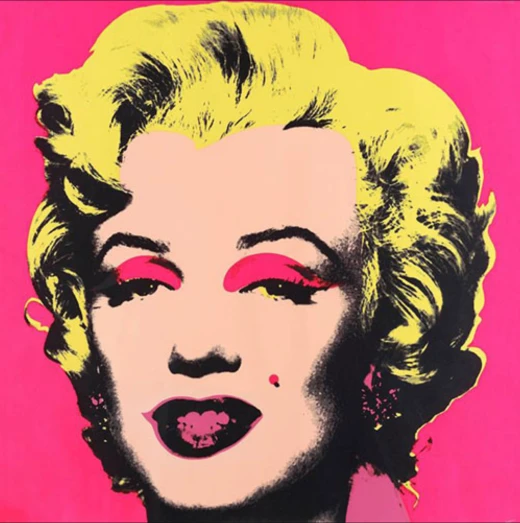In the 1960s, Warhol began his most prolific period as an artist. He had already begun making a name for himself in the commercial art world, yet he desired to known as a fine artist as well. He began converting the themes of advertisements into large-scale graphic canvases. To make his large-scale graphic canvases, Warhol projected an enlarged image onto a canvas on the wall. He would subsequently work freehand, without a pencil, rendering a painterly result. In order to develop his own niche in painting, his friends suggested he paint the things he loved the most. The result was the iconic Campbell’s Soup Cans, 1962. Warhol said of Campbell’s Soup “I used to drink it. I used to have the same lunch every day, for 20 years, I guess, the same thing over and over again.” Though the works resemble mass-produced advertisements, they were painted by projecting the images onto a canvas and stenciled afterwards. This way, Warhol removes evidence of an artist’s hand.

